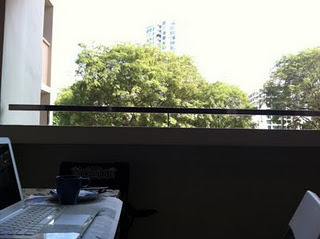 |
| Palm Fiber Cleaning Scrubber |
Ah, this is a nesting blog after all. I have not forgotten, albeit the overflowing basket. Rest assured, the basket has indeed overflowed. So that’s that. Moving on.
What do you use to scrub off the grime stuck on your bathroom or kitchen sink? Why, any handy brush I can get my hands on, you might say. So what about this nice, scruffy, sturdy-looking bad boy above? The brush head itself is usually twisted into wire like
this one, sans handle. I am confident you’ve spotted this at your corner store, mini mart or grocery, particularly if you are residing within the Asian region. If not, perhaps more likely because you dwell in a part of the world where coconut palm trees aren’t abundant and would find these in
home stores distributing imported goods, then be introduced (or re-introduced) to the coconut palm fiber cleaning scrub. Or a
Coir fiber cleaning brush.
Where I am from, this heavy duty household cleaning tool is widely used all throughout the archipelago and the brush head is made from the fibers of the sugar palm tree (Arengga pinnata). The tree has several other aliases, varying per region where it grows and is harvested, such as
bagatbat (Negros Oriental
), ibiok (Capiz and Bohol
), rapitan (Ilocos
), irok (Zambalez and Mindoro
), kauing (Bataan
), and the more mainland
cabo Negro (Spanish-Filipino
) and
kaong (Manila and Rizal
). While the tree has sustained societies with the various wondrous uses of its parts, its most vital industrial yield is from the fibers, (commercially referred to as
gomut) producing ropes, filters, thatching materials and cleaning brushes, to name a few.
So, what is so good about it? Well, it
is natural and devoid of synthetics and plastics. It is durable – those fibers are known to withstand long exposure to fresh and salt water, as well as being fire resistant. As a cleaning scrub, it is popular for scrubbing oily pots and pans made from cast-iron, earthenware and stainless steel, and effective for sinks and bathtubs. And these things are inexpensive, like seriously cheap. I got that one with the handle above for a little more than SGD2 from a general store in a Singaporean mall (yes, a commercial shopping mall).
So there, it is all sorts of amazing, it is.



